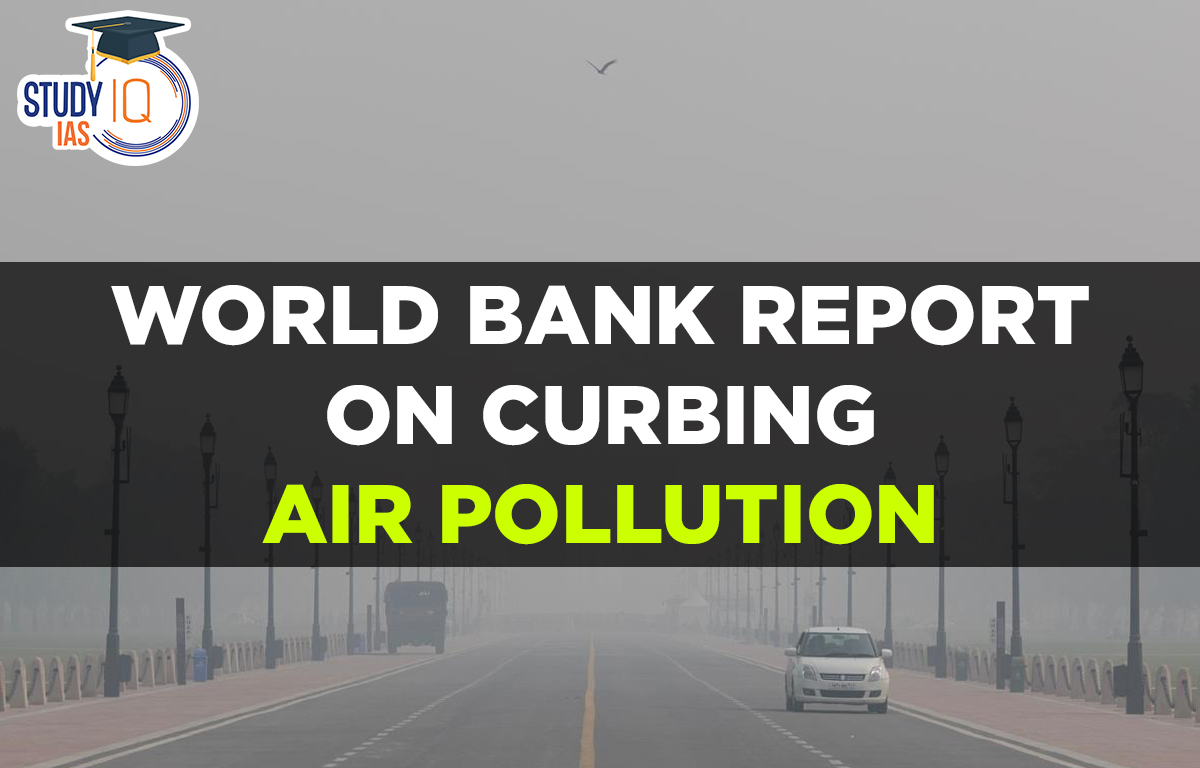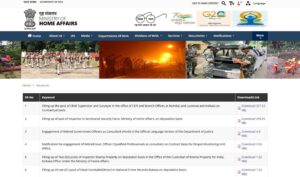Table of Contents
World Bank Report on Curbing Air Pollution has published in South Asia, titled ‘Striving for Clean Air: Air Pollution and Public Health in South Asia’.
Important Findings of the Report
Overview of Air Pollution in South Asia
- Nine out of the world’s 10 cities with the worst air pollution are in South Asia.
- Nearly 60 percent of the South Asian population lives in areas where concentrations of PM2.5 exceed an annual mean of 35 μg/m3.
- In the densely populated Indo-Gangetic Plain, it is over 20 times the level that the WHO considers healthy (100 μg/m3 in several locations).
- The World Health Organization’s (WHO) Air Quality Guideline recommends that concentrations of PM2.5 should not exceed an annual average of 5 µg/m3.
Impacts of Air Pollution
-
- Ambient air pollution is a public health crisis for South Asia, not only imposing high economic costs but also causing an estimated 2 million premature deaths each year.
- The health impacts of air pollution drives up health-care costs, lowers productive capacity, and accounts for lost days worked.

- Main Causes of Air pollution in South Asia: Sources of air pollution that are less important in other parts of the world make substantial additional contributions to the pollution load in South Asia.
- These include solid fuel combustion for cooking and heating, small industries such as brick kilns, burning of municipal waste, fireworks, human cremation, imbalanced use of fertilizer and livestock manure in agriculture, forest fires etc.
- Airsheds: Although air pollution travels far in South Asia, it does not uniformly disperse over the continent, but gets trapped in large “airsheds”.
- The report has identified six major airsheds in South Asia between which air pollutants move. They are:
- West/Central Indo-Gangetic Plain: Punjab (Pakistan), Punjab (India), Haryana, part of Rajasthan, Chandigarh, Delhi, Uttar Pradesh
- Central/Eastern Indo-Gangetic Plain: Bihar, West Bengal, Jharkhand, Bangladesh;
- Middle India: Odisha/Chhattisgarh;
- Middle India: Eastern Gujarat/Western Maharashtra;
- Northern/Central Indus River Plain: Pakistan, part of Afghanistan; and
- Southern Indus Plain and further west: South Pakistan, Western Afghanistan extending into Eastern Iran.
- The report has identified six major airsheds in South Asia between which air pollutants move. They are:

- Interdependence in air quality within airsheds: Air quality and pollution in all the identified airsheds in South Asia is interlinked. For example,
- When the wind direction was predominantly northwest to the southeast, 30% of the air pollution in Indian Punjab came from the Punjab Province in Pakistan.
- On average, 30% of the air pollution in the largest cities of Bangladesh (Dhaka, Chittagong, and Khulna) originated in India.
- What this means is that even if Delhi National Capital Territory were to fully implement all air pollution control measures by 2030 while other parts of South Asia continued to follow current policies, it wouldn’t keep pollution exposure below 35 µg/m3.
Way Forward



 Accredited Social Health Activists (ASHA...
Accredited Social Health Activists (ASHA...
 World’s 1st Unique Q-Shield Platform a...
World’s 1st Unique Q-Shield Platform a...
 IB ACIO Recruitment Notification 2025 Ex...
IB ACIO Recruitment Notification 2025 Ex...





















